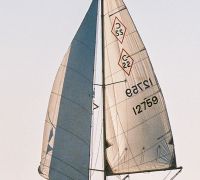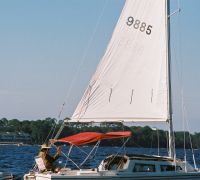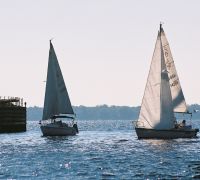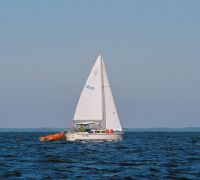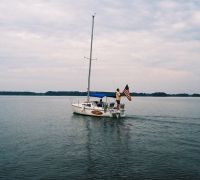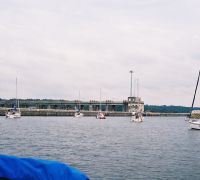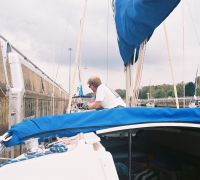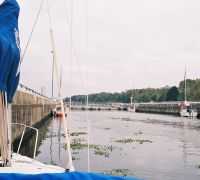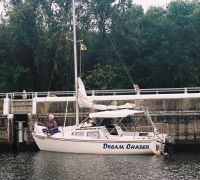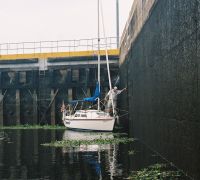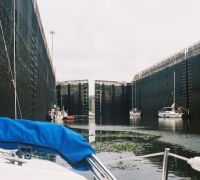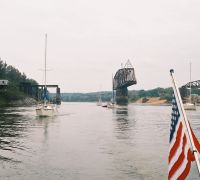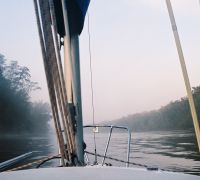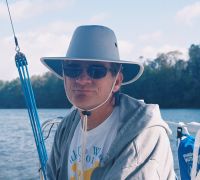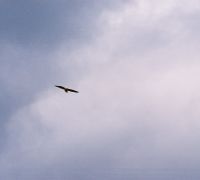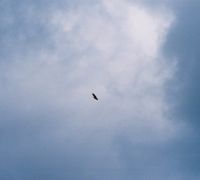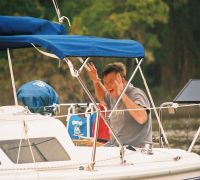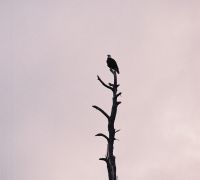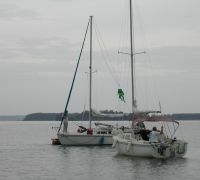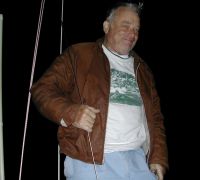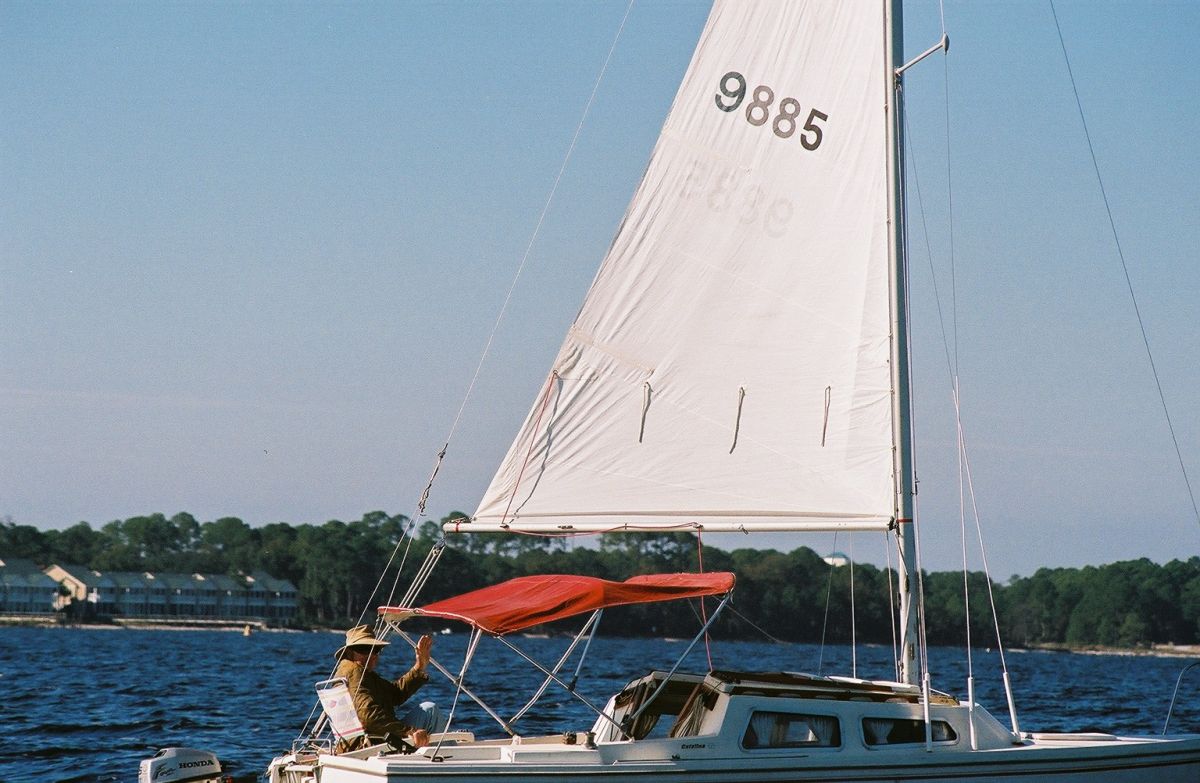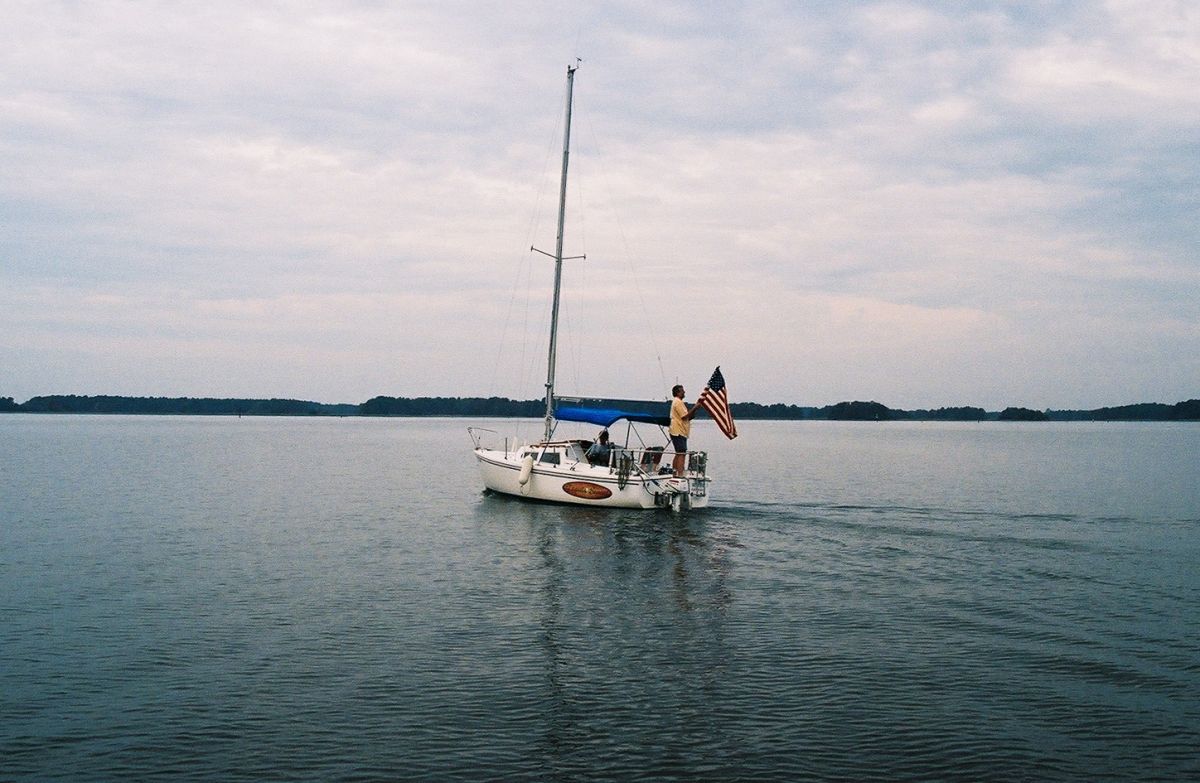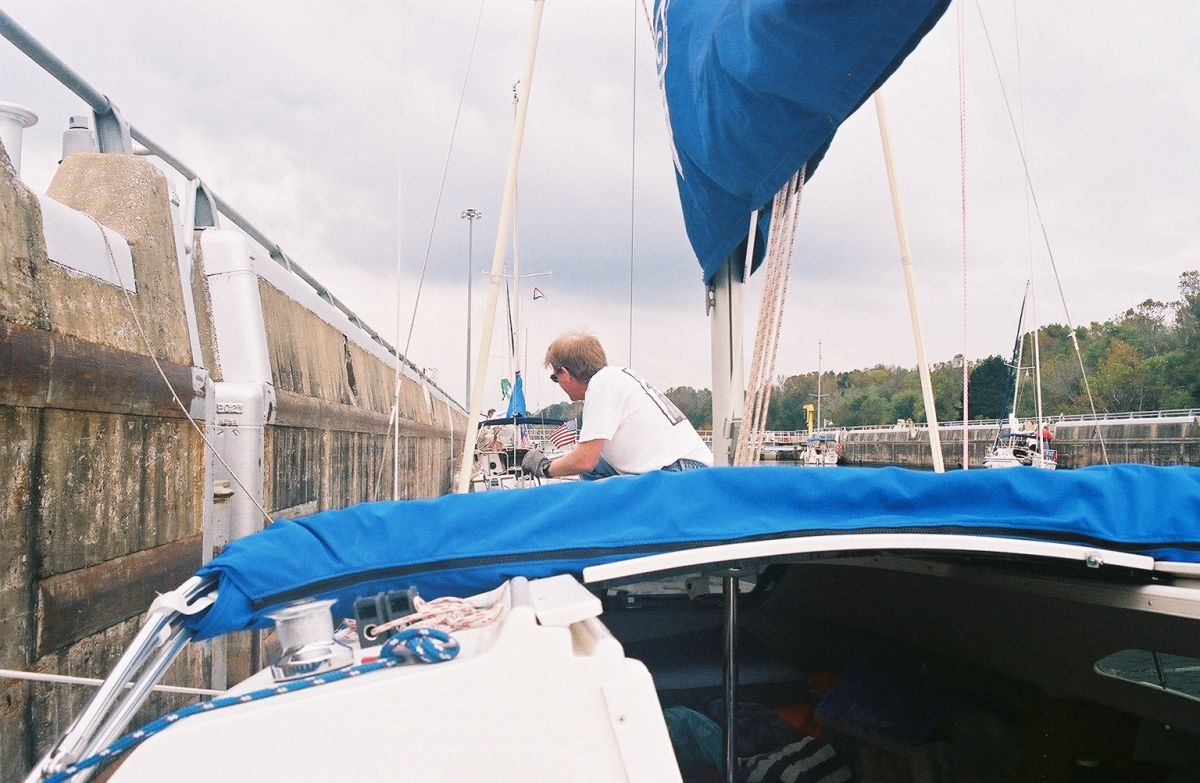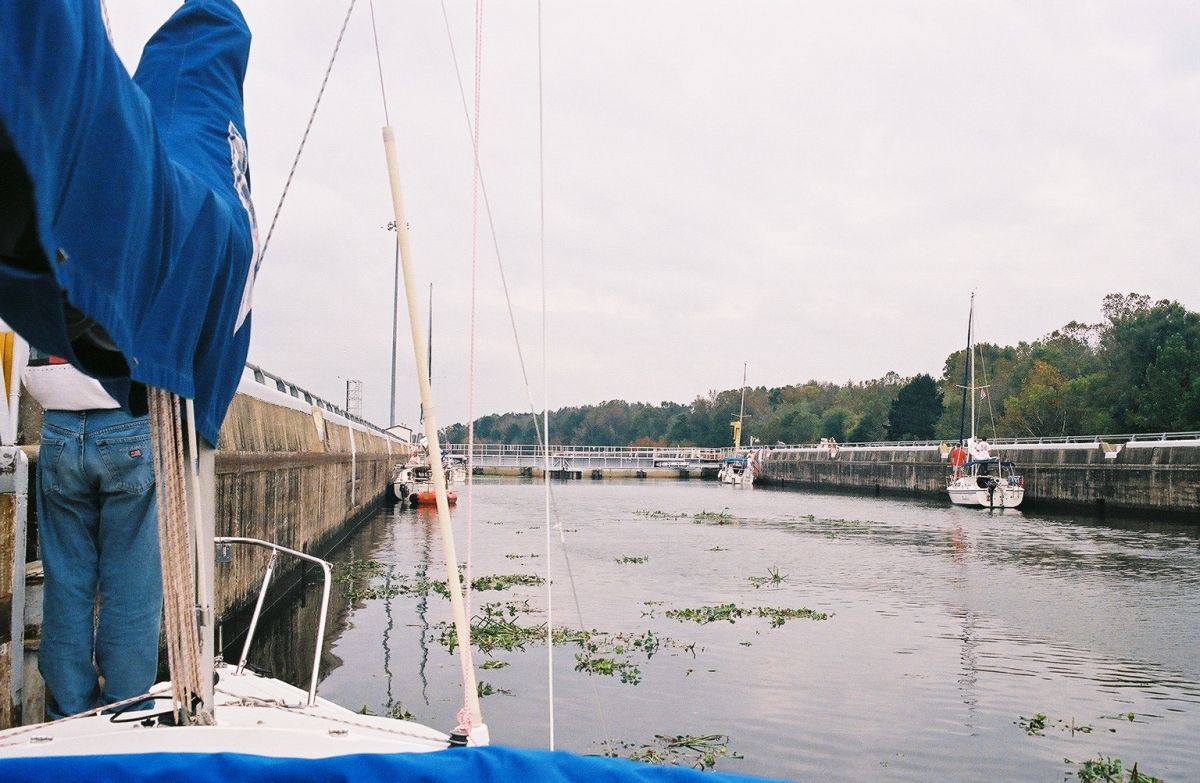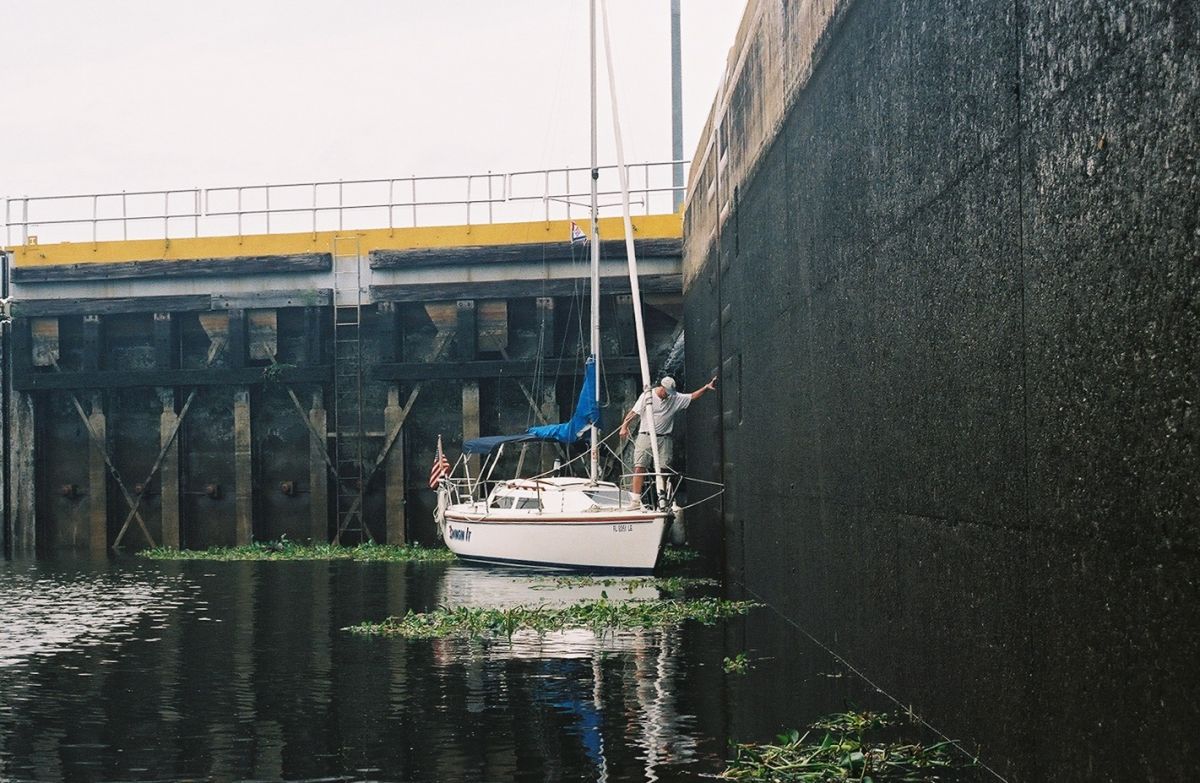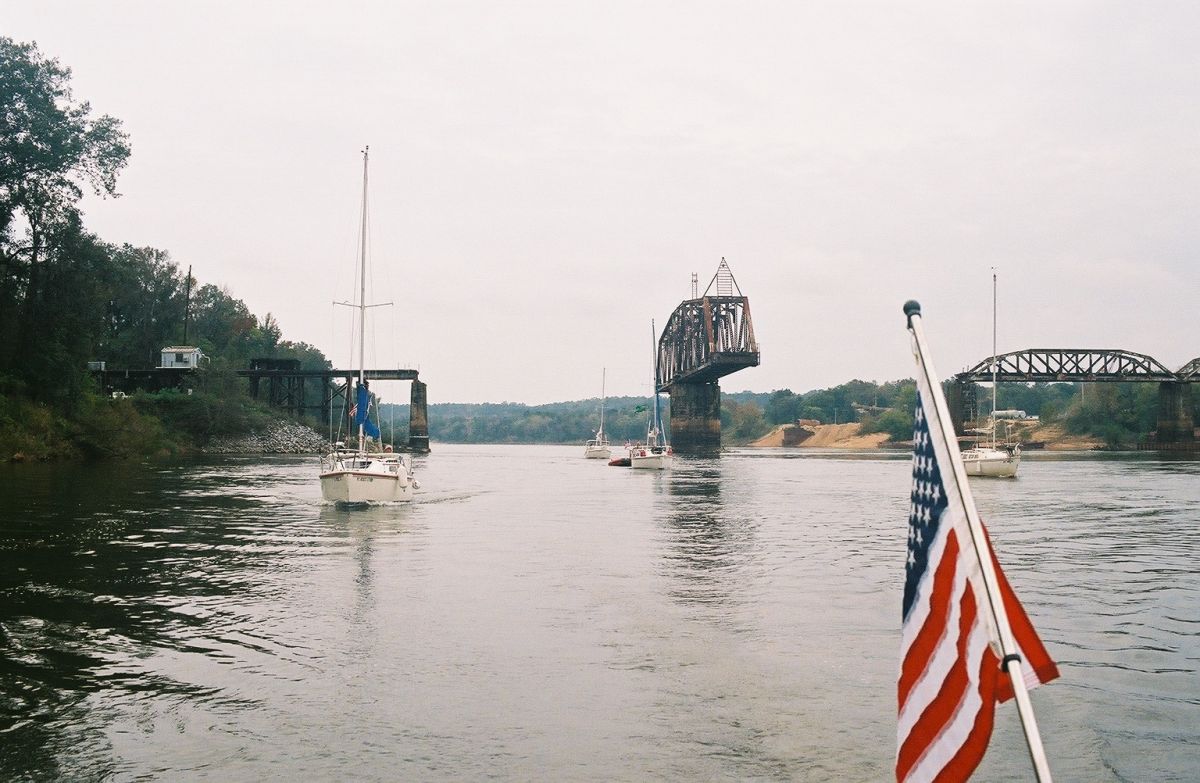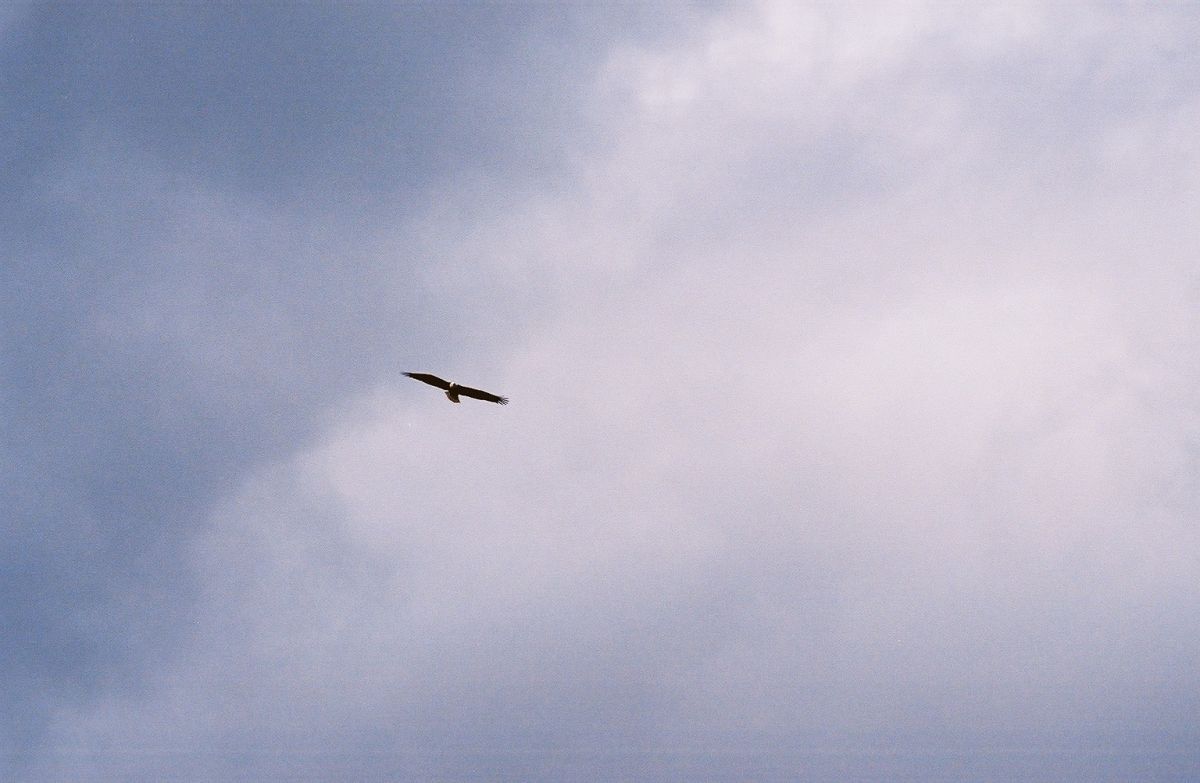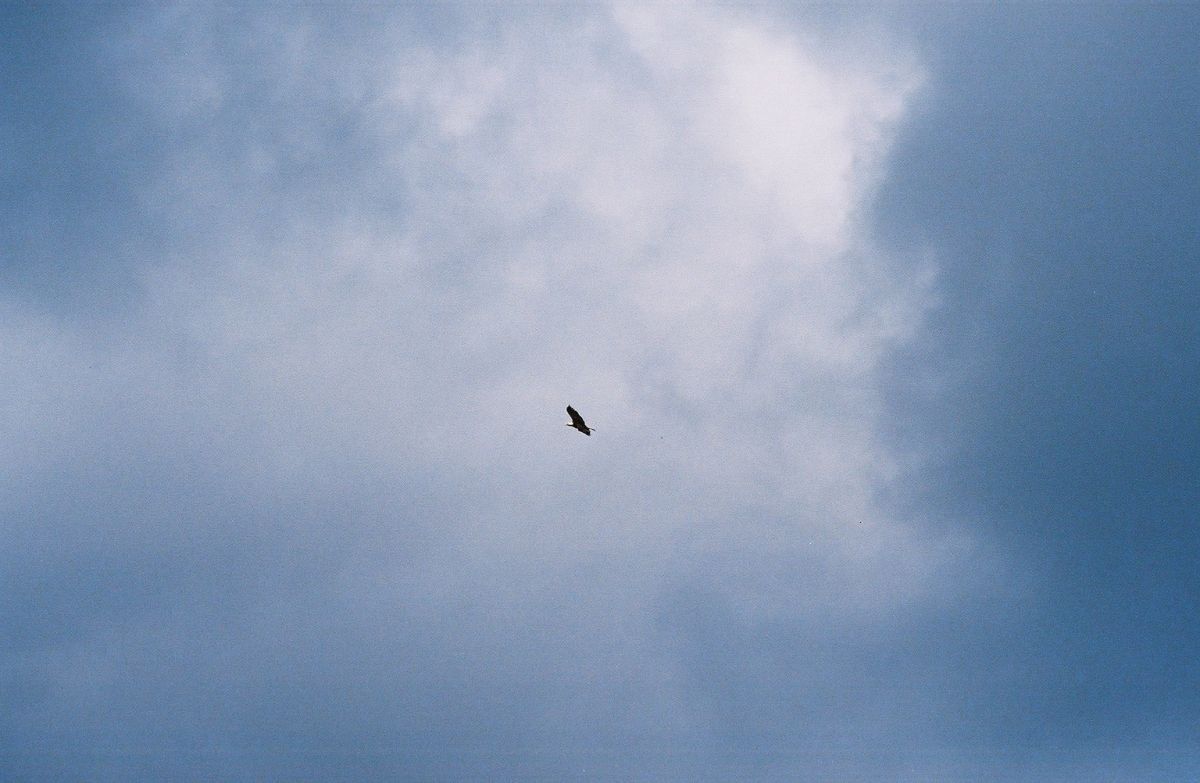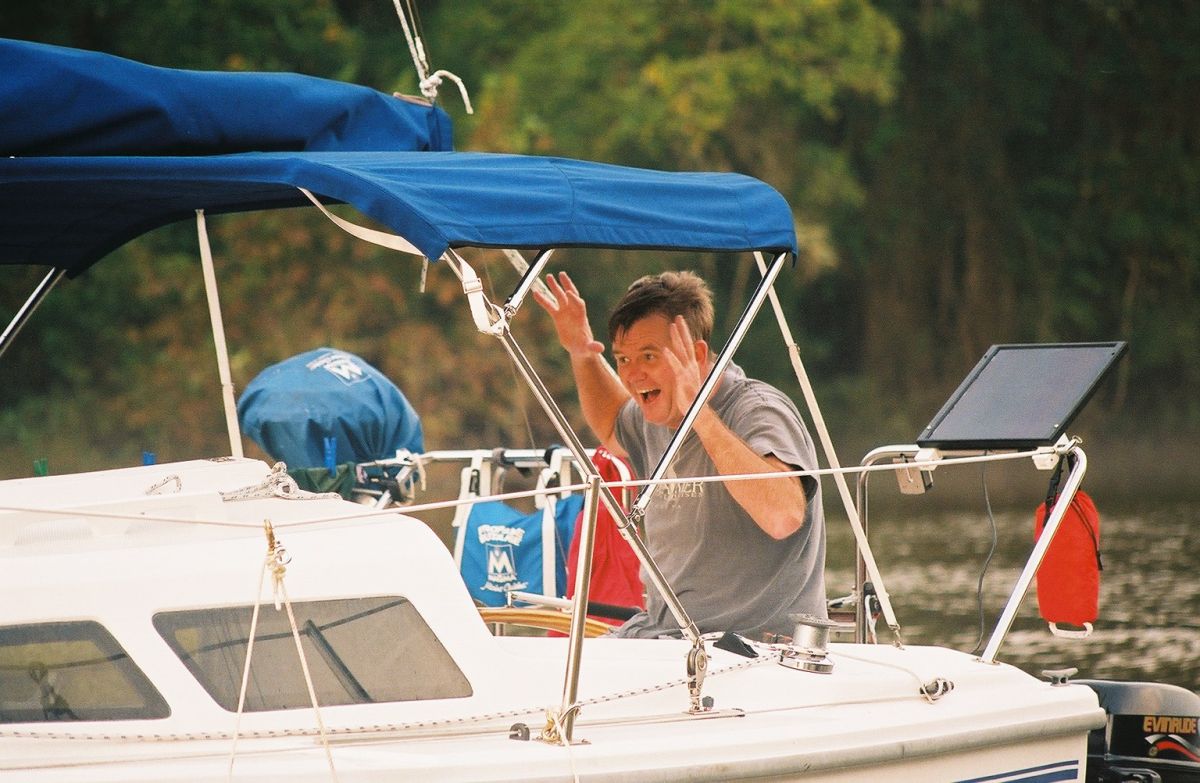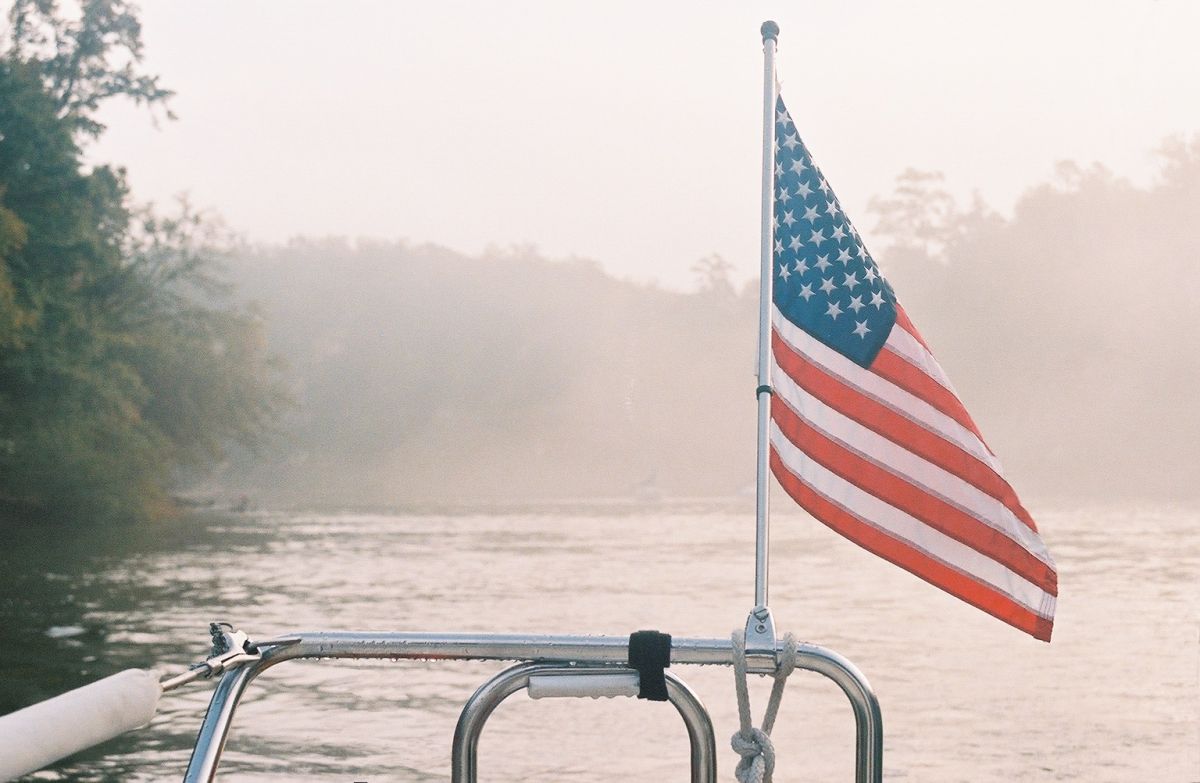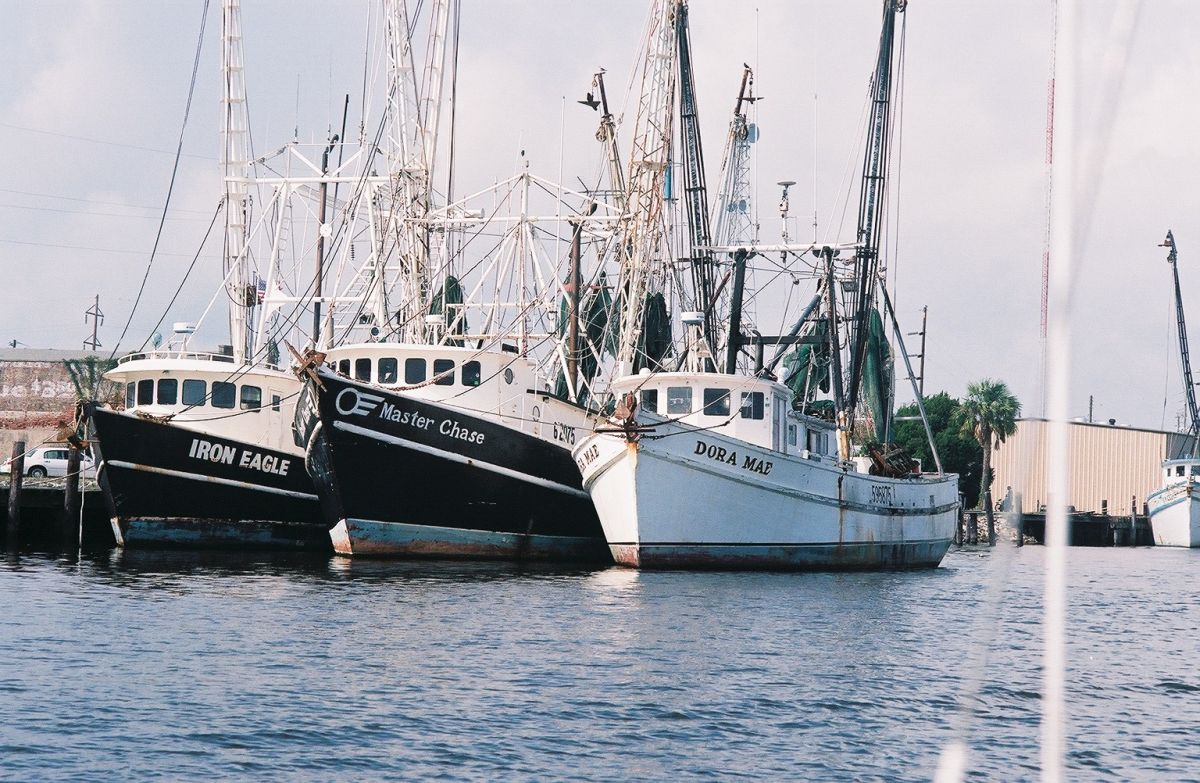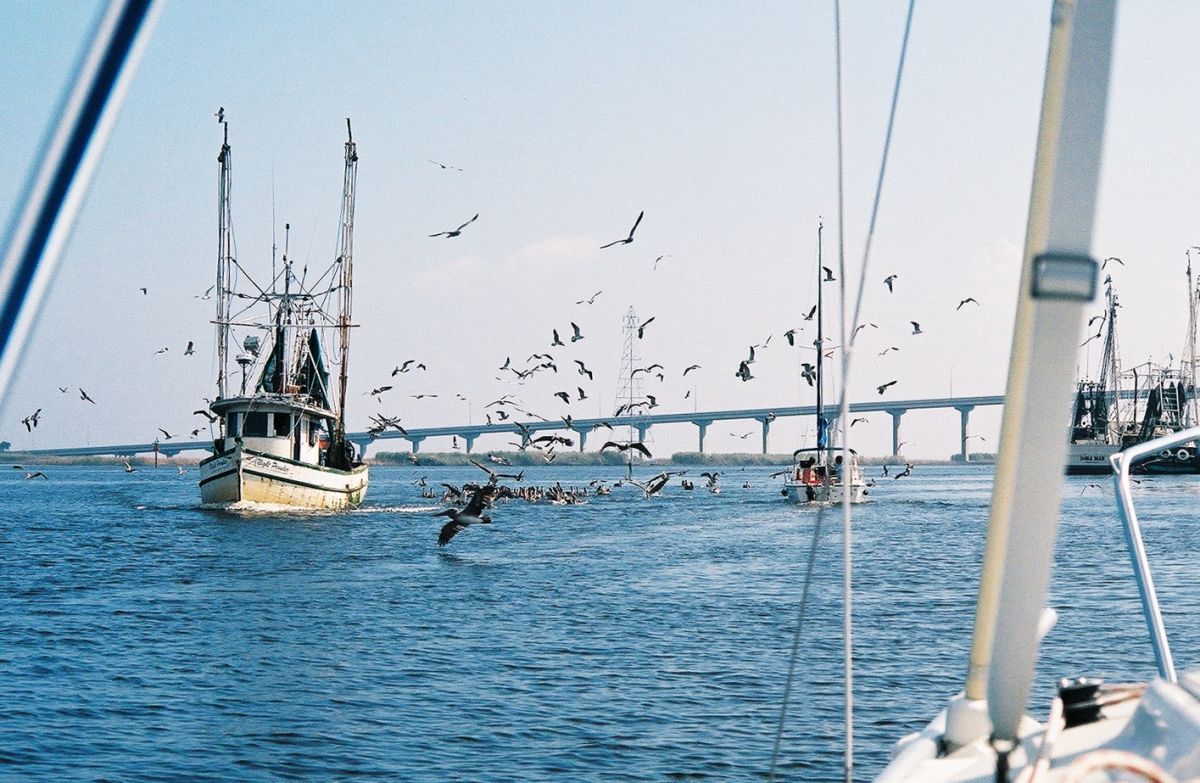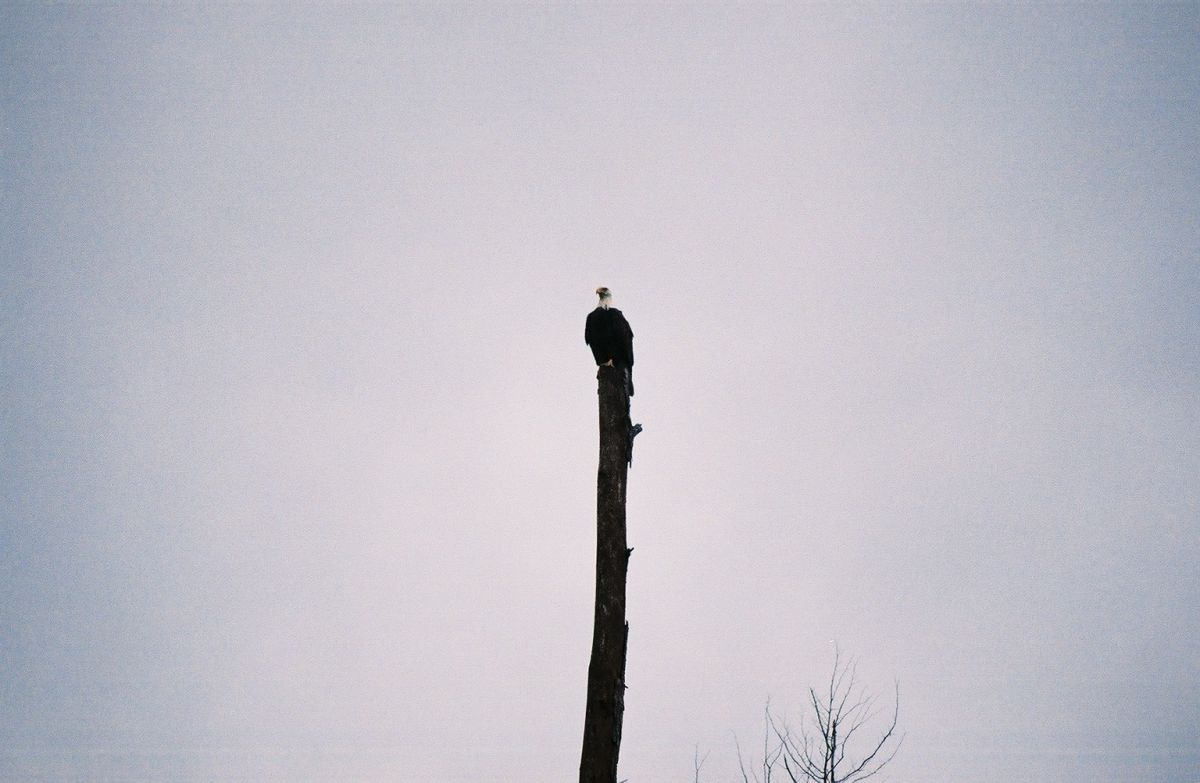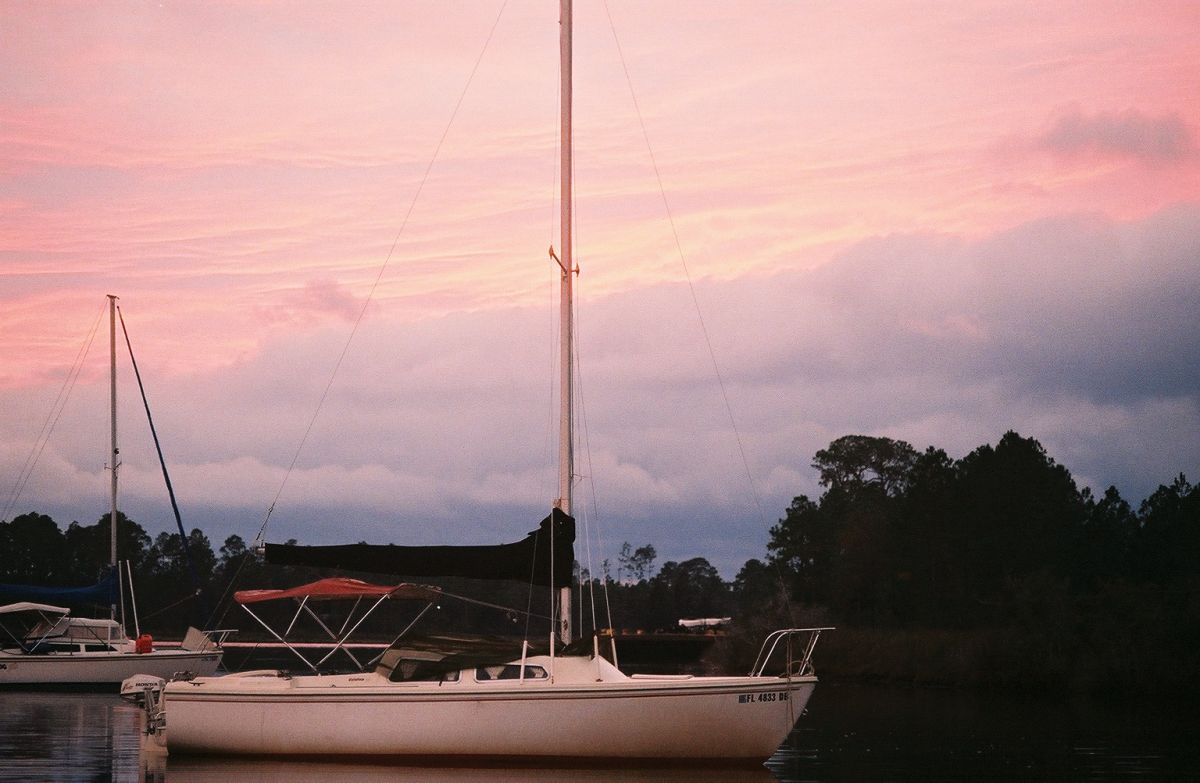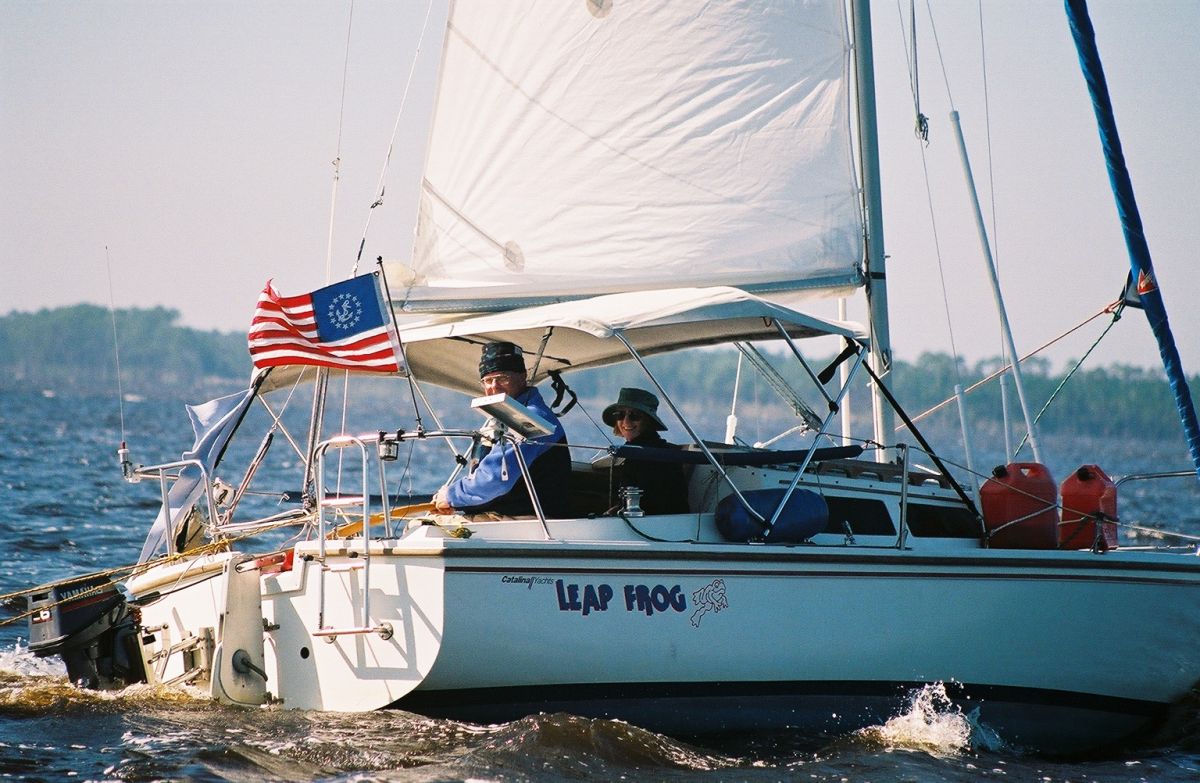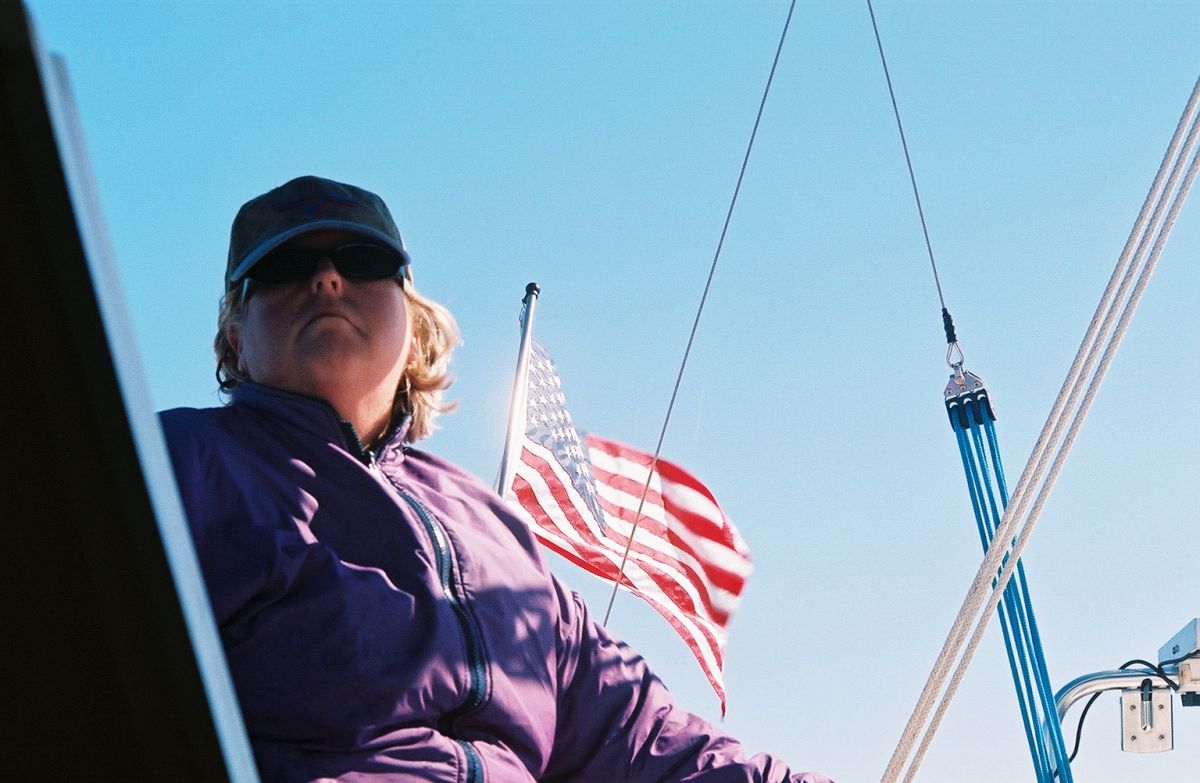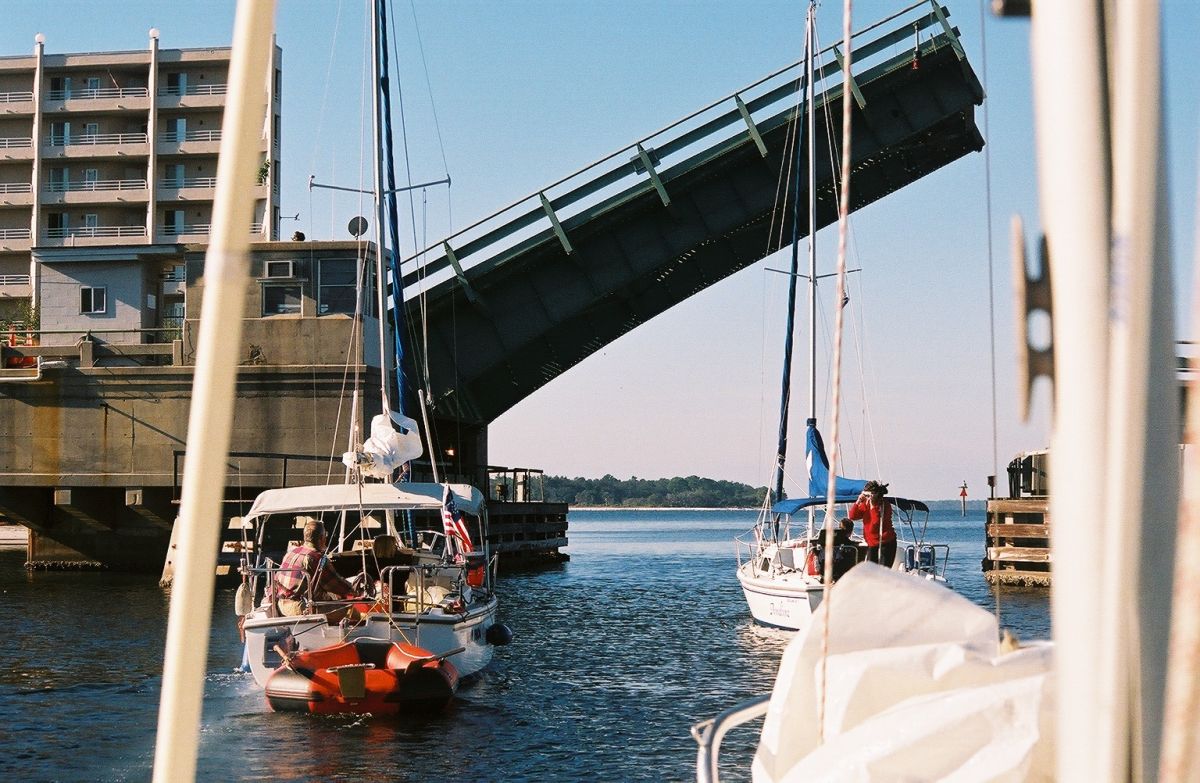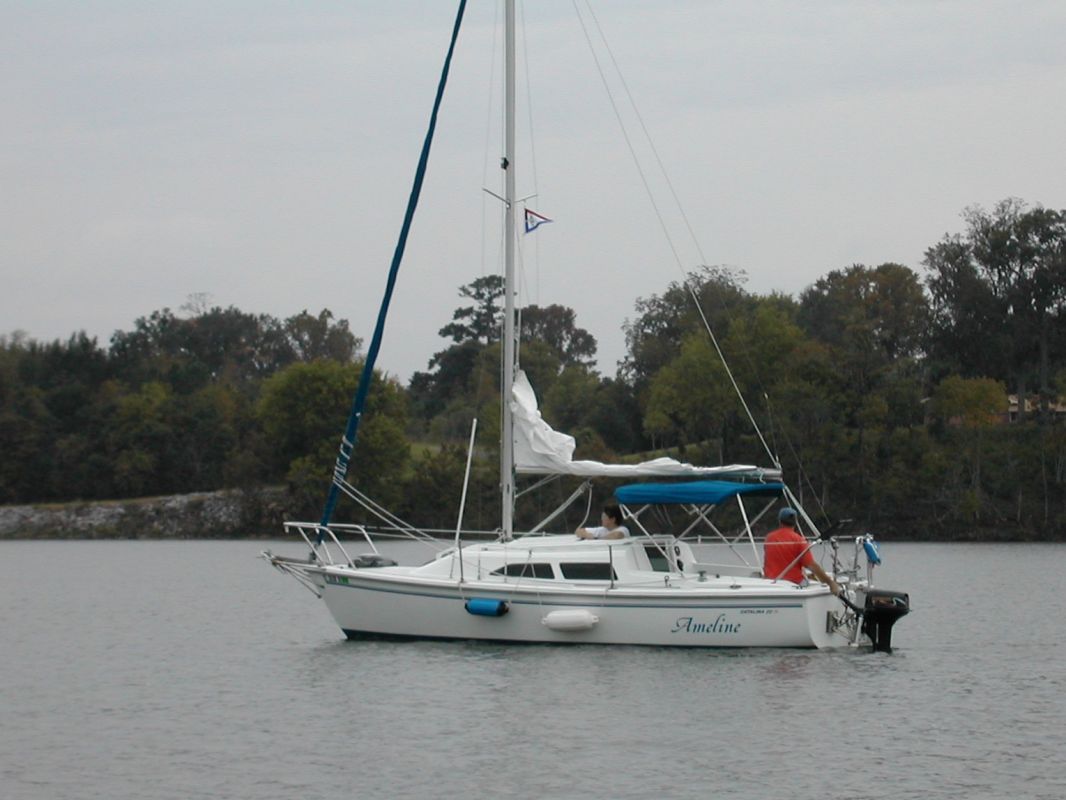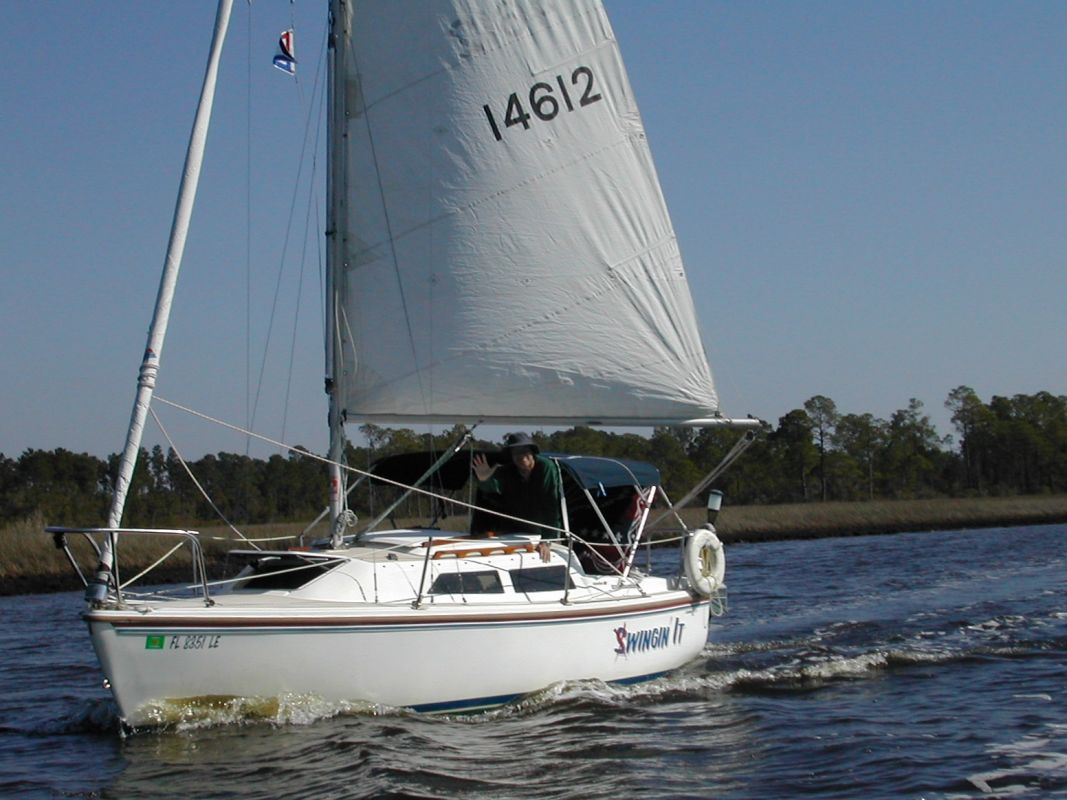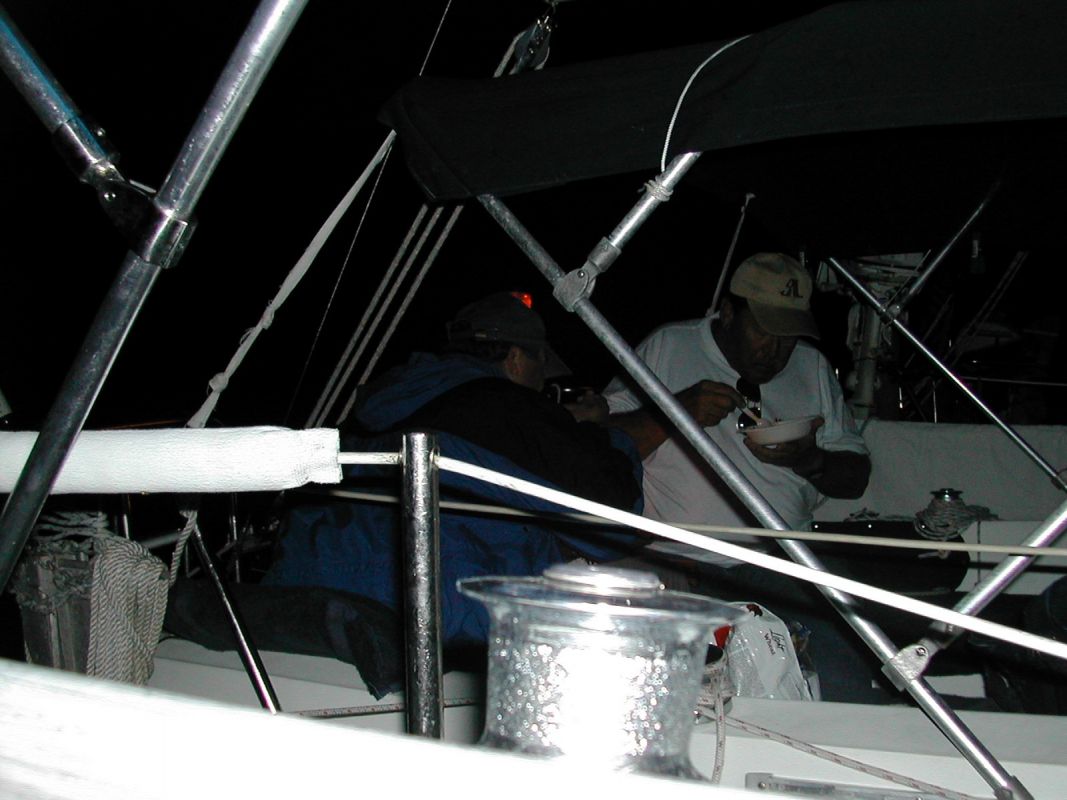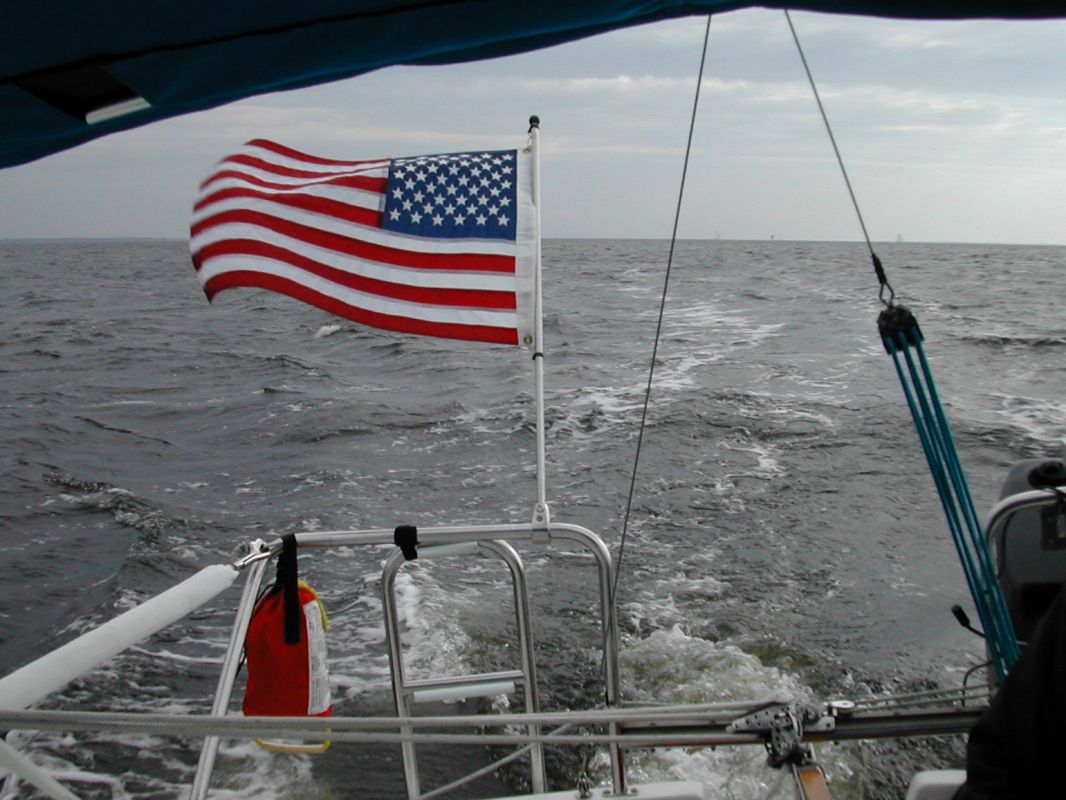
A.K.A. Hooligan's Chattahoochee Coup
Fleet 77 is well known for their annual Northern Gulf Coast Cruise, which has attracted C22 sailors from all over the country and Canada. The cruise is approximately one week long and follows the Intracoastal Waterway from Ft. Walton Beach, Florida to Wolf Bay, Alabama and back. This year Fleet 77 offered a second weeklong cruise. Paul Gallant, owner and skipper of Hooligan, came up with the idea for this cruise and did the research and planning. It soon became known as Hooligan’s Chattahoochee Coup. Understandably, one may not want to spend an extended cruise or brave an ocean passage on a smaller boat such as a Catalina 22, but adventure awaits the skipper of even the smallest yacht. Hooligan’s Chattahoochee Coup was just such an adventure.
Our adventure began on Saturday November 9th at Chattahoochee State Park on the Georgia side of Lake Seminole as we all gathered and prepared our boats for the trip.
- Paul Gallant – Fleet 77 - Hooligan
- Mike and Dee LaGarde – Fleet 77 - Ameline
- Bob and Trish Endicott – Fleet 77 - Tequila Sunset
- Ned Westerlund – Fleet 77 – Wingin’ It
- Vernon Senterfitt – Fleet 92 – Mari-Lee
- Kent and Jane Overbeck – Fleet 95 - Leap Frog
- Deiter and Evelyn Kuberg – Fleet 95 - Dream Chaser
- Ted and Dora McGee – Fleet 58 - Rhapsody in seA
Part of the success of this journey was getting tow vehicles and trailers from Lake Seminole to our destination, Ft. Walton Beach, Florida. Paul Gallant had arranged with Fleet 77 members who were not making the trip to shuttle our vehicles to the destination for us. It was because of the help of Greg Haymore, Frank Barbour, Joe Endicott, Fred Boyer, Win Boyer, Chuck DeBoe, Judy Gallant, Brigitte Westerlund, Nicky Westerlund, Ron Miller, and Susan Miller we were able to make the trip.
It was with some amusement that we checked and loaded supplies. Although the Catalina 22 is a small boat, planning a weeklong trip on one is no small matter. Dora and I have made three week-long cruises on our boat, so one would think that we would be old hands and could draw from previous cruise experience. On our previous cruises we could make daily stops at marinas for supplies, hot showers, and walks to stretch our legs. But this trip was different. The first available source of supplies was three days and 106 miles away. Consequently we all over packed. The average C22 on this trip carried about 15 gallons of fuel along with sufficient water for showers, washing, and drinking, not to mention food and beverages for the entire trip. With temperatures expecting to range from the mid-40s to the low 70s. Everything from polar fleece to t-shirts were packed. Once everything was packed and stowed we were ready to go.
“The swamp’s alive with a thousand eyes, and all of them looking at you! You’d better stay off the track to Hattie’s shack, in the back of the Black Bayou.” Jim Stafford, Swamp Witch.
The first of many challenges presented itself right away. We had to motor about two miles from the launch site to the Jim Woodruff Dam. Extending out from the shore about 200 yards was a thick bed of grass just below the water surface. With motors turning at maximum horsepower we could make about 1 knot an hour until finally breaking free of the grass underneath. Mike and Dee LaGarde on Ameline reported seeing an alligator, which put the rest of us on our toes.
Everyone was excited when we entered the lock at the dam. The lock would lower us about 30 feet from Lake Seminole into the Apalachicola River. There were eight boats and eight floating moorings to tie up to. This was a new experience for all of us. A couple of boats mistakenly tied up to fixed moorings. The lock attendant made sure we were all properly secured before lowering us to the river.
The upper reaches of the Apalachicola River are heavily forested. In addition, the Apalachicola River Basin has one of the highest concentrations of reptiles and amphibians in North America. One could get lost in daydreams here. With a little imagination, the Apalachicola River Basin was transformed into the Belgian Congo. It was easy to picture the African Queen, complete with Humphrey Bogart and Katharine Hepburn, steaming downriver. Unfortunately, one couldn’t indulge in this fantasy long. With one eye on the channel and the other on the depth meter, the river demanded your constant attention.
In years past barges used this river frequently. Today, only about one barge a day enters the Apalachicola River from the Intracoastal waterway, but few if any, travel the 100 miles or so up river to Lake Seminole. With little or no commercial traffic, coupled with the cost and environmental impact of dredging to keep the deep channel open, future trips such as this may not be possible.
(Author's note: A second trip was made in October, 2010 and documented in "Hooligan's Chattahoochee Coup Too".)
We got plenty of sleep. We were typically anchored for the night by 5:00 PM. It was dark around 6:00 PM and we were usually tucked in for the night by 8:00 PM. We were up by 6:00 AM and as soon as there was enough light to navigate we were underway.
The trip downriver was spectacular. Early morning mist gave way to beautiful scenery and a variety of wildlife. Each day we saw something that made the whole trip worthwhile, if that was all you saw the entire trip. In addition to the alligator sighting in Lake Seminole, there were sightings of otters, deer, and bear. Turtles sunned themselves on almost every log. This was the first time many of us had seen bald eagles in the wild. We would see an occasional fisherman, who probably wondered what sailboats were doing so far up the river. Hunting season had just opened and you could hear gunfire from time-to-time. Fisherman and hunters used small houseboats, which had been towed, into position as a base of operation.
The river current varied from 1 to 2 knots, which helped us make good time. The forest of the upper reaches of the Apalachicola River gave way to cypress swamps in the lower reaches. We entered the Intracoastal Waterway on Monday, November 11 and followed it southeast to the city of Apalachicola, Florida.
Apalachicola is a fishing community and famous in the southeast for seafood and oysters. This was a planned stopover and we all looked forward to a seafood dinner. We started getting conflicting reports from local residents about an approaching storm. Some felt we should move west that night and get across Lake Wimico, a shallow lake on the Intracoastal Waterway that could be difficult to navigate in foul weather. Mike and Dee LaGarde decided to cross Lake Wimico while there was still daylight and spend the night in White City. We opted to go with the LaGardes and the rest of the group stayed in Apalachicola. The weather was turning cooler and we spent Tuesday at White City with the LaGardes enjoying hot chocolate and soup.
As it turned out, the storm moved north and the group that crossed Lake Wimico on Tuesday had an easy crossing with only a little rain to deal with. The rest of the group met up with us about 2:00 PM on Tuesday and we continued west along the Intracoastal Waterway. Up until this point the trip had gone without major incident. Shortly after leaving White City the motor on Tequila Sunset died. Paul Gallant had brought a spare motor, but they were unable to get it going. Ned Westerlund on Wingin’ It took Tequila Sunset in tow. We took refuge in Wetappo Creek and spent a chilly night, with temperatures dropping into the 40s.
“Nibblin’ on sponge cake, Watchin’ the sun bake, All of those tourists covered with oil. Strummin’ my six-string, On my front porch swing, Smell those shrimp they’re beginning to boil.” Jimmy Buffet, Margaritaville
Wednesday we would leave the cypress swamp behind and set sail across East Bay to Panama City, a popular tourist spot. I had switched our depth sounder off because our battery would not hold a charge. Usually the solar panel supplied sufficient power to keep the depth sounder going, but it was still early and the sun was low. Just before entering East Bay I felt the rudder bump and then we stopped. Dora set our main, the boat turned, heeled, and we were easily free. Unfortunately when the boat turned the rudder came out of the gudgeons and there was no steerage. We were blown onto another shoal, which was not so easy to get off.
Kent and Jane Overbeck on Leap Frog and Paul Gallant on Hooligan were on hand to help. We tried using our anchor to kedge and I got in the water and tried to lift the stern. We were stuck in muck and the harder I pushed up on the stern the deeper I sank in muck. Kent Overbeck used his dingy, affectionately named Tadpole, to get our anchor in deep water. He also rowed towlines from Hooligan and Leap Frog to us. Finally, with all three of our motors going we were able to free Rhapsody.
A few minutes later we were under sail. A dolphin that surfaced next to the boat and disappeared under the bow soon joined us. Our course would take us across East Bay and part of St. Andrew Bay to Panama City. Our destination was Bayou Joe’s, a popular dockside restaurant located in Massolina Bayou. After lunch we took on fuel and ice. Grady Christian, a Fleet 77 member who lives in Panama City, provided a replacement motor for Tequila Sunset. Other members of Fleet 77 joined us for dinner. Some of us spent the night anchored in Massolina Bayou, others at City Marina.
We had a long distance to go Thursday. We sailed across St. Andrew Bay and West Bay with the wind on our back. Although the morning started cool it soon warmed and we were back to t-shirts. On the west side of West Bay the Intracoastal Waterway enters an area known locally as “the ditch”. This is a narrow 17-mile canal that connects West Bay with Choctawhatchee Bay. We spent a good portion of the afternoon motoring through this area, arriving in Choctawhatchee Bay shortly before dark. We rafted up for a bit of potluck supper and a delicious soup prepared by Trish Endicott. Later that evening we anchored out and slept comfortably.
On Friday, November 15 we were underway at first light. This was the last day. Ft. Walton Beach Yacht Club was on the other side of Choctawhatchee Bay. The wind was on our backs and built to 18-20 knots throughout the morning. With sails set wing-on-wing everyone reported speeds in excess of 7 knots, with some boats reporting an occasional 8 knots. Ned Westerlund on Wingin’ It reported a momentary 10.4 knots as he surfed off the back of a wave.
We begin arriving at the yacht club around noon. Fleet 77 had kept their promise and our tow vehicles were waiting for us. The adventure was over. Just as it began with a gathering in a parking lot at Lake Seminole, it ended with a departure in a parking lot at Ft. Walton Beach. We had traveled 106 miles downriver to Apalachicola, Fl and 139 miles west along the Florida panhandle past Port St. Joe, Panama City, and Destin for a total of 245 miles.
That evening many of us got together for dinner. It was a chance to wear our “From the Gators to the Sharks” t-shirts. It was also a time to swap heroic and adventurous stories from the cruise and plan future cruises. More importantly, it was chance to spend a little more time with friends.
Author's Note: This article was printed in the February 2003 issue of Catalina Yachts magazine Mainsheet. The article appears in the Destinations section under the title "Hooligan's Chattahoochee Coup". The original title "Small Boat, Big Adventure" was a play on the movie by the title "White Hunter, Black Heart" which was a thinly veiled fictionalized account of the filming of the "African Queen". Good friend and cruise participant, Vernon Senterfitt produced a video of this story. Sadly Vernon passed away on September 15, 2016.
2002 Small Boat Big Adventure
